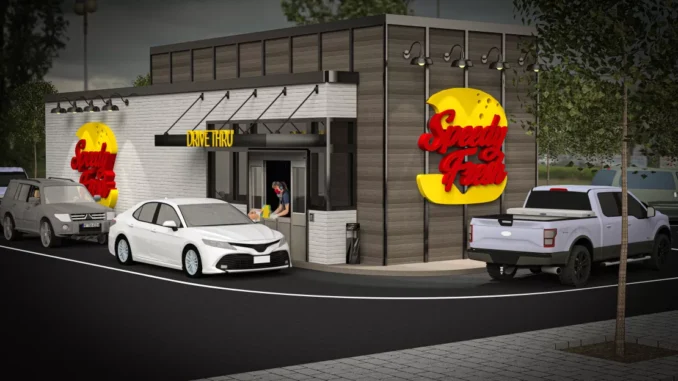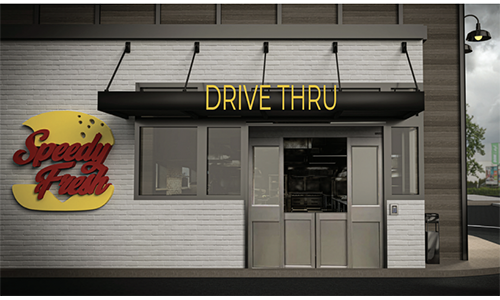
By Greg Erickson, National Account Manager at STANLEY Access Technologies - 12.11.2023
It has been said that the first drive-thru restaurant was created in 1947 by Sheldon “Red” Chaney, operator of Red’s Giant Hamburg in Springfield, Missouri. Located on the famous Route 66, the restaurant served customers until its closure in 1984. Several other companies claim to have invented the first restaurant of this kind, and some say that the first business establishment to have a drive-thru option was not a restaurant, but a bank – The City Center Bank in Syracuse, New York – which opened in 1928 for the convenience of busy bank customers.
The quick-service restaurant (QSR) industry has changed considerably since then, and the past few years have been all about innovation – mostly fueled by COVID-19 adaptations and customers’ changing needs and interests. Technology has been the primary driver of this change and is predicated upon customer convenience. Crucial innovations included digital tools like order kiosks, mobile order-ahead capabilities, mobile loyalty programs, expanded drive-thru lanes and window/door hybrid solutions – like STANLEY Access Technologies’ DuraGlide® DT™ Window & Door solution- that allows for more seamless customer experiences. To keep up with the times and prepare for the next chapter of customer experiences, QSR industry leaders must explore and consider multiple innovations like this when evaluating the future of drive-thru operations.
The New Frontier of Consumer Behavior
The seismic shift in customer preferences precipitated by the pandemic has reshaped the landscape of the QSR industry. Customers now prioritize efficient to-go offerings over dine-in options. With an unprecedented surge in traffic, a massive shift towards online ordering, and an escalating demand for delivery services, QSRs have to quickly adapt their drive-thru operations.
Although the average total time spent in a drive-thru lane shrank 29 seconds this year and wait times were 25 seconds shorter, total drive-thru times still lag compared to 2019 by 15 seconds according to stats from Intouch Insight. This data highlights the urgency for QSRs to respond to these evolving consumer behaviors through innovative drive-thru solutions.
As consumers increasingly value speed and efficiency in their dining experiences, QSRs must leverage technology to streamline drive-thru operations further. From mobile order-ahead capabilities to loyalty programs, technology has become the catalyst for meeting the demands of the modern consumer.
Technology as the Engine of Transformation
The QSR industry has witnessed a transformative wave powered by technology in recent years. According to a survey, restaurants that have implemented new technology reported increased efficiency (77%), less pressure on staff (61%), reduced costs (35%), and more revenue (33%). These numbers underline the pivotal role of technology in redefining the drive-thru experience.
To navigate consumer demand, surging labor expenses and workforce shortages while ensuring sustained profitability, QSR leaders need to explore a modernized drive-thru model that redefines the standards for exceptional service. Advanced technology and innovative solutions stand as the linchpin for transforming the drive-thru into a service that is not only more adaptable and efficient but also centered around customer needs.
Dura-Glide® DT™ seamlessly elevates service, quality and throughput, and incorporating such forward-thinking solutions allows QSRs not just to keep abreast of technological advancements but also to meet the ever-evolving expectations of consumers seeking a drive-thru experience that is seamless and efficient.
A Paradigm Shift in Drive-Thru Window Design
Creative adaptations in drive-thru models have been the norm for QSRs looking to enhance customer experiences. Designated waiting areas, redefined staff roles, and an overall transformation of drive-thru service have marked recent innovations. While these changes have undoubtedly improved overall operations, they’ve also exposed the constraints inherent in the traditional drive-thru window model.
For example, some QSRs have a designated staff member responsible for rushing orders through the front door of the restaurant – they can’t exactly crawl out the drive-thru window – and hand-delivering to cars that are waiting. Some divide their drive-thru service so that food delivery drivers have their own, separate process for picking up orders. While these changes help improve the overall operations, they also reduce the effectiveness and benefit of the traditional drive-thru window. In many instances, windows become a barrier to service. 
That said, there is a growing need for a comprehensive reevaluation of drive-thru inefficiencies, acknowledging design inadequacies. There are new drive-thru design innovations available that are helping the drive-thru model evolve, and Dura-Glide® DT™ allows restaurant staff to work more efficiently, service more customers and improve the overall experience without a delay or interruption to customer service. Restaurant staff can opt for automatic door mode during times of heightened traffic when dedicated waiting spots are filled up or the drive-thru queue is getting longer. During lull periods, staff can effortlessly swap back to window mode, introducing much needed flexibility to the drive-thru model.
On the back end, the technology helps restaurant leaders address the change in consumer demand, surging labor expenses and workforce shortages – while ensuring sustained profitability. QSRs can drive home the benefits of increased efficiency and customer experience by implementing this new infrastructure to improve throughput with quicker exchanges and reduced wait times – completely redefining the drive-thru experience.
In the current landscape of challenges and opportunities in the fast-food industry, drive-thru efficiency remains a critical factor in delivering customer satisfaction and sustaining profitability. By embracing groundbreaking infrastructure and technology, QSRs position themselves at the forefront of innovation, meeting the evolving needs of their customers in a rapidly changing landscape. The drive-thru is not just a means of convenience, it’s a pivotal touchpoint in the customer journey. By charting this new course for drive-thru experiences, QSR leaders can create a lasting impact offering not just food but redefined and memorable customer experiences.
 Greg Erickson, National Account Manager at STANLEY Access Technologies, is responsible for bringing new, innovative products to the QSR market. With 25+ years’ experience in the automatic door industry, Greg has a proven track record of developing and maintaining partnerships with some of the biggest names in retail, healthcare, and quick-service restaurants across the US and Canada. He has a deep understanding of the QSR industry, new trends, challenges, and the future of drive-thru design solutions.
Greg Erickson, National Account Manager at STANLEY Access Technologies, is responsible for bringing new, innovative products to the QSR market. With 25+ years’ experience in the automatic door industry, Greg has a proven track record of developing and maintaining partnerships with some of the biggest names in retail, healthcare, and quick-service restaurants across the US and Canada. He has a deep understanding of the QSR industry, new trends, challenges, and the future of drive-thru design solutions.
Are you an industry thought leader with a point of view on restaurant technology that you would like to share with our readers? If so, we invite you to review our editorial guidelines and submit your article for publishing consideration.

